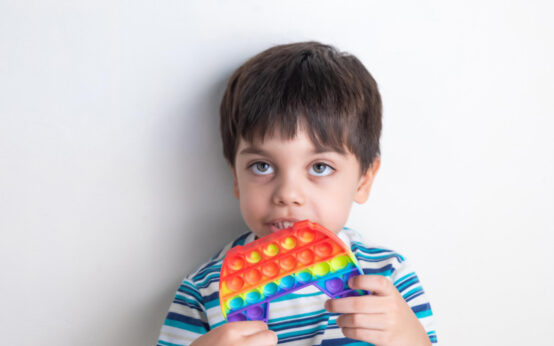Introduction
Recognizing these three early signs of Autism Spectrum Disorder (ASD) is essential for parents and caregivers. Numerous children on the autism spectrum display developmental differences during their infant and toddler years, especially in social and language skills.
Identifying these signs early can lead to timely intervention and support. The American Academy of Pediatrics (AAP) highlights three key indicators of ASD in young children.
Delay in or Lack of Joint Attention
Joint attention, the ability to connect with another person while focusing on an object or event, is a fundamental developmental skill. Children with ASD often experience delays in joint attention, impacting their social and communication skills. Identifying these delays is crucial for initiating early intervention.
Autism is not a tragedy. Ignorance is a tragedy.
Kerry Magro
Understanding Stages of Joint Attention
- By 12 months: typically developing children can often respond to a parent’s pointing gesture with a smile.
- By 15 months: Typically, children often point to objects that are out of reach when expressing their desires. Children with ASD might lead a parent to the object without making eye contact, using the parent’s hand.
- By 18 months: Typically, children point at interesting objects, engaging in reciprocal interactions with a parent. However, children with ASD may use pointing primarily as a means to have a parent retrieve objects for them rather than for shared enjoyment.
Language Delays and Differences with ASD
Nearly all children on the autism spectrum encounter delays in nonverbal communication and spoken language. Identifying these differences is critical for early intervention.
Notable Differences:
- The use of labels: Children with ASD may demonstrate the ability to label objects using words but might encounter challenges using words to express their needs or desires.
- Echoing and repeating: While repeating phrases is common in young children, those with ASD may continue this behavior for an extended period, often mimicking tones and voices from movies or conversations.
- Unusual language use: Some children with ASD may meet language milestones during toddler years but exhibit unusual language patterns, sounding more like adults than their peers.
Regression in Developmental Milestones and Skills
Approximately 25% of children later diagnosed with ASD may experience a regression in language and social skills between the ages of 15 and 24 months. Acknowledging this regression is crucial for initiating early intervention.
Conclusion
If you have concerns about your child’s development, it is crucial to communicate with your pediatrician. Taking action early can significantly influence your child’s development, and your concerns play a valuable role in determining the most appropriate course of action.
Source
- Ozonoff, S., Goodlin-Jones, B. L., & Solomon, M. (2005). Evidence-based assessment of autism spectrum disorders in children and adolescents. Journal of Clinical Child and Adolescent Psychology, 34(3), 523-540.
- Charman, T. (2020). Early identification and intervention in autism spectrum disorder: Recommendations for practice and research. European Child & Adolescent Psychiatry, 29(4), 443-460.
- Zwaigenbaum, L., Bauman, M. L., Choueiri, R., Fein, D., Kasari, C., Pierce, K., … & Stone, W. L. (2015). Early identification of autism spectrum disorder: Recommendations for practice and research. Pediatrics, 136(Supplement 1), S10-S40.
- Baranek, G. T., Watson, L. R., Boyd, B. A., Poe, M. D., David, F. J., & McGuire, L. (2013). Hyporesponsiveness to social and nonsocial sensory stimuli in children with autism, children with developmental delays, and typically developing children. Development and Psychopathology, 25(2), 307-320.
- Lord, C., Risi, S., Lambrecht, L., Cook, E. H., Leventhal, B. L., DiLavore, P. C., … & Rutter, M. (2000). The autism diagnostic observation schedule—generic: A standard measure of social and communication deficits associated with the spectrum of autism. Journal of Autism and Developmental Disorders, 30(3), 205-223.







